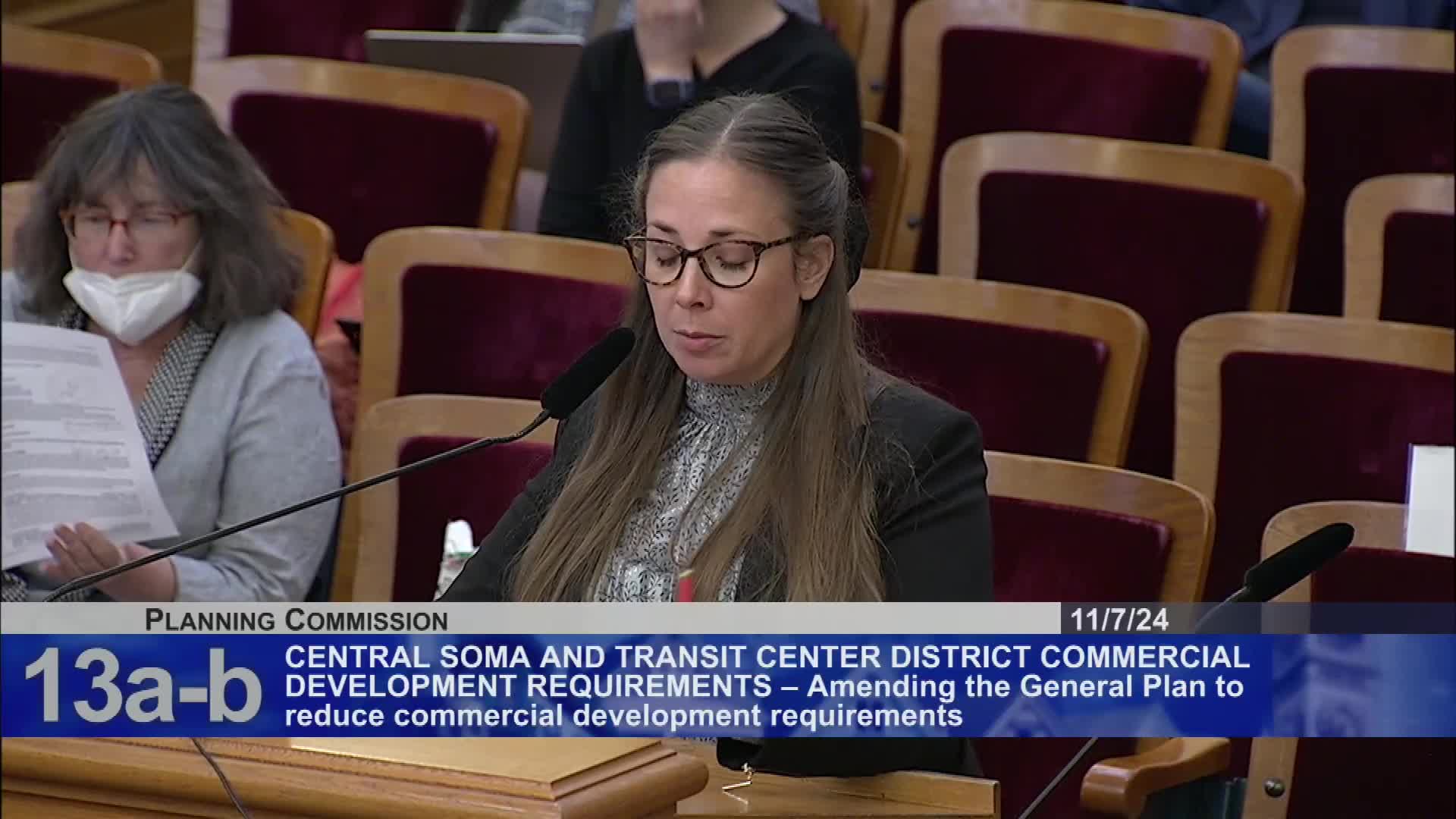San Francisco Planning Commission debates Central SoMa housing development amendments
November 07, 2024 | San Francisco City, San Francisco County, California
This article was created by AI summarizing key points discussed. AI makes mistakes, so for full details and context, please refer to the video of the full meeting. Please report any errors so we can fix them. Report an error »

The San Francisco Planning Commission convened on July 4, 2025, to discuss significant amendments to the Central SoMa Plan, a topic that has sparked considerable debate among community members and stakeholders. The proposed changes aim to shift the focus from office development to residential projects in response to evolving market conditions and the city's pressing housing shortage.
During the meeting, city officials highlighted that while five million square feet of office space has been entitled in Central SoMa, none has been constructed, largely due to the pandemic's impact on the office market. This stagnation has resulted in a lack of public benefits and impact fee revenue for the city. The Planning Department recommended modifying the ordinance to exempt projects under 600 feet from mandatory office allocation requirements, allowing for increased residential development in a transit-rich area.
Community members expressed strong concerns regarding the proposed changes. Advocates from organizations like Soma Filipinas and the Assado Market Community Action Network (SamCan) voiced their fears that the shift towards residential development could lead to gentrification and displacement of existing residents. They emphasized the need for a community-based planning process and called for the preservation of affordable housing commitments originally outlined in the Central SoMa Plan, including a requirement for 33% affordable housing.
Public comments underscored the importance of ensuring that community benefits, such as parks, childcare centers, and educational investments, remain integral to any new development. Residents questioned how the proposed changes would affect existing entitlements and the promised community benefits, urging the commission to prioritize the needs of current residents over market-driven interests.
Supporters of the amendments, including developers, argued that allowing more residential projects could ultimately generate greater community benefits through impact fees and inclusionary housing requirements. They stressed the need for realistic planning that reflects current market conditions and the urgent demand for housing.
As the meeting concluded, the Planning Commission was left to weigh the concerns of community advocates against the potential benefits of increased residential development in Central SoMa. The outcome of this discussion will play a crucial role in shaping the future of the neighborhood and addressing the city's ongoing housing crisis.
During the meeting, city officials highlighted that while five million square feet of office space has been entitled in Central SoMa, none has been constructed, largely due to the pandemic's impact on the office market. This stagnation has resulted in a lack of public benefits and impact fee revenue for the city. The Planning Department recommended modifying the ordinance to exempt projects under 600 feet from mandatory office allocation requirements, allowing for increased residential development in a transit-rich area.
Community members expressed strong concerns regarding the proposed changes. Advocates from organizations like Soma Filipinas and the Assado Market Community Action Network (SamCan) voiced their fears that the shift towards residential development could lead to gentrification and displacement of existing residents. They emphasized the need for a community-based planning process and called for the preservation of affordable housing commitments originally outlined in the Central SoMa Plan, including a requirement for 33% affordable housing.
Public comments underscored the importance of ensuring that community benefits, such as parks, childcare centers, and educational investments, remain integral to any new development. Residents questioned how the proposed changes would affect existing entitlements and the promised community benefits, urging the commission to prioritize the needs of current residents over market-driven interests.
Supporters of the amendments, including developers, argued that allowing more residential projects could ultimately generate greater community benefits through impact fees and inclusionary housing requirements. They stressed the need for realistic planning that reflects current market conditions and the urgent demand for housing.
As the meeting concluded, the Planning Commission was left to weigh the concerns of community advocates against the potential benefits of increased residential development in Central SoMa. The outcome of this discussion will play a crucial role in shaping the future of the neighborhood and addressing the city's ongoing housing crisis.
View full meeting
This article is based on a recent meeting—watch the full video and explore the complete transcript for deeper insights into the discussion.
View full meeting
